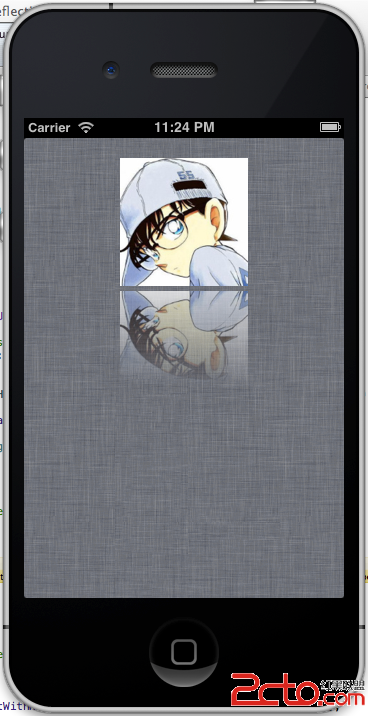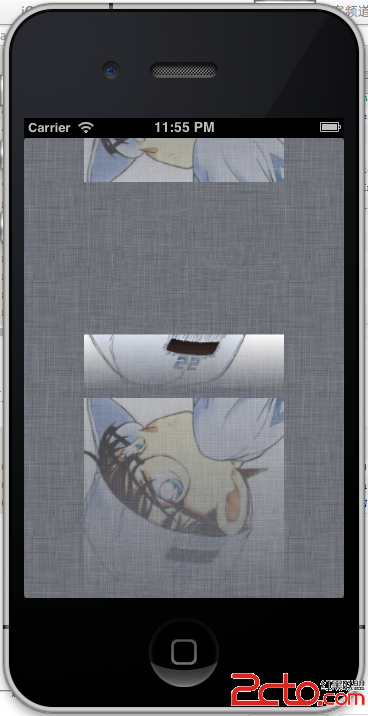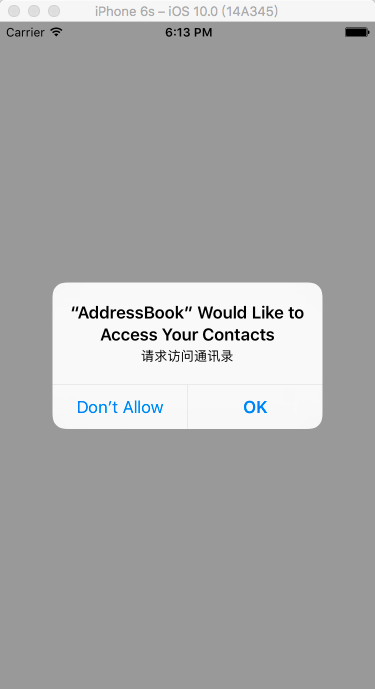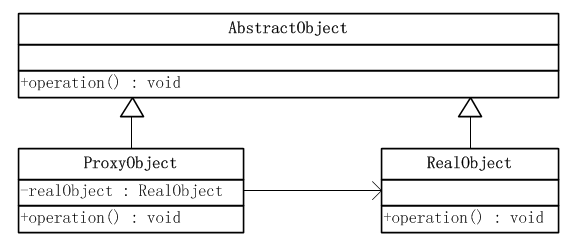iOS圖片倒影效果的2種實現
編輯:IOS開發綜合
 實現二
為UIImage添加一個關於倒影的category,以實現返回這個圖片,
[cpp]
#import <UIKit/UIKit.h>
@interface UIImage (Reflection)
- (UIImage *)reflectionWithHeight:(int)height;
- (UIImage *)reflectionWithAlpha:(float)pcnt;
- (UIImage *)reflectionRotatedWithAlpha:(float)pcnt;
@end
UIImage+Reflection.h
[cpp]
#import "UIImage+Reflection.h"
#ifndef UIImageReflectionMethods
#define UIImageReflectionMethods
CGImageRef CreateGradientImage (int pixelsWide, int pixelsHigh, CGFloat endPoint) {
CGImageRef theCGImage = NULL;
// gradient is always black-white and the mask must be in the gray colorspace
CGColorSpaceRef colorSpace = CGColorSpaceCreateDeviceGray();
// create the bitmap context
CGContextRef gradientBitmapContext = CGBitmapContextCreate(NULL, pixelsWide, pixelsHigh, 8, 0, colorSpace, kCGImageAlphaNone);
// define the start and end grayscale values (with the alpha, even though
// our bitmap context doesn't support alpha the gradient requires it)
CGFloat colors[] = {0.0, 1.0, 1, 1.0};
// create the CGGradient and then release the gray color space
CGGradientRef grayScaleGradient = CGGradientCreateWithColorComponents(colorSpace, colors, NULL, 2);
CGColorSpaceRelease(colorSpace);
// create the start and end points for the gradient vector (straight down)
CGPoint gradientStartPoint = CGPointZero;
CGPoint gradientEndPoint = CGPointMake(0, endPoint);
if (endPoint < 0) {
gradientEndPoint = CGPointMake(0, -endPoint);
}
// draw the gradient into the gray bitmap context
CGContextDrawLinearGradient(gradientBitmapContext, grayScaleGradient, gradientStartPoint, gradientEndPoint, kCGGradientDrawsAfterEndLocation);
CGGradientRelease(grayScaleGradient);
// convert the context into a CGImageRef and release the context
theCGImage = CGBitmapContextCreateImage(gradientBitmapContext);
if (endPoint < 0) {
// rotate
CGContextClearRect(gradientBitmapContext, CGRectMake(0, 0, pixelsWide, pixelsHigh));
CGContextTranslateCTM(gradientBitmapContext, 0.0, pixelsHigh);
CGContextScaleCTM(gradientBitmapContext, 1.0, -1.0);
CGContextDrawImage(gradientBitmapContext, CGRectMake(0, 0, pixelsWide, pixelsHigh), theCGImage);
CGImageRelease(theCGImage);
theCGImage = CGBitmapContextCreateImage(gradientBitmapContext);
}
CGContextRelease(gradientBitmapContext);
// return the imageref containing the gradient
return theCGImage;
}
static CGContextRef MyCreateBitmapContext (int pixelsWide, int pixelsHigh) {
CGColorSpaceRef colorSpace = CGColorSpaceCreateDeviceRGB();
// create the bitmap context
CGContextRef bitmapContext = CGBitmapContextCreate (NULL, pixelsWide, pixelsHigh, 8, 0, colorSpace, (kCGBitmapByteOrder32Little | kCGImageAlphaPremultipliedFirst));
CGColorSpaceRelease(colorSpace);
return bitmapContext;
}
#endif
@implementation UIImage (Reflection)
- (UIImage *)reflectionRotatedWithAlpha:(float)pcnt {
int height = self.size.height;
UIImage * fromImage = self;
pcnt = 1.0 / pcnt;
// create a bitmap graphics context the size of the image
CGContextRef mainViewContentContext = MyCreateBitmapContext(fromImage.size.width, height);
// create a 2 bit CGImage containing a gradient that will be used for masking the
// main view content to create the 'fade' of the reflection. The CGImageCreateWithMask
// function will stretch the bitmap image as required, so we can create a 1 pixel wide gradient
CGImageRef gradientMaskImage = CreateGradientImage(1, height, -(height * pcnt));
// create an image by masking the bitmap of the mainView content with the gradient view
// then release the pre-masked content bitmap and the gradient bitmap
CGContextClipToMask(mainViewContentContext, CGRectMake(0.0, 0.0, fromImage.size.width, height), gradientMaskImage);
CGImageRelease(gradientMaskImage);
// In order to grab the part of the image that we want to render, we move the context origin to the
// height of the image that we want to capture, then we flip the context so that the image draws upside down.
// CGContextTranslateCTM(mainViewContentContext, 0.0, height);
// CGContextScaleCTM(mainViewContentContext, 1.0, -1.0);
// draw the image into the bitmap context
CGContextDrawImage(mainViewContentContext, CGRectMake(0, 0, fromImage.size.width, fromImage.size.height), [fromImage CGImage]);
// create CGImageRef of the main view bitmap content, and then release that bitmap context
CGImageRef reflectionImage = CGBitmapContextCreateImage(mainViewContentContext);
CGContextRelease(mainViewContentContext);
// convert the finished reflection image to a UIImage
UIImage * theImage = [UIImage imageWithCGImage:reflectionImage];
// image is retained by the property setting above, so we can release the original
CGImageRelease(reflectionImage);
return theImage;
}
- (UIImage *)reflectionWithHeight:(int)height {
if (height == -1) {
height = [self size].height;
}
if (height == 0)
return nil;
UIImage * fromImage = self;
// create a bitmap graphics context the size of the image
CGContextRef mainViewContentContext = MyCreateBitmapContext(fromImage.size.width, fromImage.size.height);
// create a 2 bit CGImage containing a gradient that will be used for masking the
// main view content to create the 'fade' of the reflection. The CGImageCreateWithMask
// function will stretch the bitmap image as required, so we can create a 1 pixel wide gradient
CGImageRef gradientMaskImage = CreateGradientImage(1, height, height);
// create an image by masking the bitmap of the mainView content with the gradient view
// then release the pre-masked content bitmap and the gradient bitmap
CGContextClipToMask(mainViewContentContext, CGRectMake(0.0, 0.0, fromImage.size.width, height), gradientMaskImage);
CGImageRelease(gradientMaskImage);
// In order to grab the part of the image that we want to render, we move the context origin to the
// height of the image that we want to capture, then we flip the context so that the image draws upside down.
CGContextTranslateCTM(mainViewContentContext, 0.0, fromImage.size.height);
CGContextScaleCTM(mainViewContentContext, 1.0, -1.0);
// draw the image into the bitmap context
CGContextDrawImage(mainViewContentContext, CGRectMake(0, 0, fromImage.size.width, fromImage.size.height), [fromImage CGImage]);
// create CGImageRef of the main view bitmap content, and then release that bitmap context
CGImageRef reflectionImage = CGBitmapContextCreateImage(mainViewContentContext);
CGContextRelease(mainViewContentContext);
// convert the finished reflection image to a UIImage
UIImage * theImage = [UIImage imageWithCGImage:reflectionImage];
// image is retained by the property setting above, so we can release the original
CGImageRelease(reflectionImage);
return theImage;
}
- (UIImage *)reflectionWithAlpha:(float)pcnt {
int height = self.size.height;
UIImage * fromImage = self;
pcnt = 1.0 / pcnt;
// create a bitmap graphics context the size of the image
CGContextRef mainViewContentContext = MyCreateBitmapContext(fromImage.size.width, height);
// create a 2 bit CGImage containing a gradient that will be used for masking the
// main view content to create the 'fade' of the reflection. The CGImageCreateWithMask
// function will stretch the bitmap image as required, so we can create a 1 pixel wide gradient
CGImageRef gradientMaskImage = CreateGradientImage(1, height, height * pcnt);
// create an image by masking the bitmap of the mainView content with the gradient view
// then release the pre-masked content bitmap and the gradient bitmap
CGContextClipToMask(mainViewContentContext, CGRectMake(0.0, 0.0, fromImage.size.width, height), gradientMaskImage);
CGImageRelease(gradientMaskImage);
// In order to grab the part of the image that we want to render, we move the context origin to the
// height of the image that we want to capture, then we flip the context so that the image draws upside down.
CGContextTranslateCTM(mainViewContentContext, 0.0, height);
CGContextScaleCTM(mainViewContentContext, 1.0, -1.0);
// draw the image into the bitmap context
CGContextDrawImage(mainViewContentContext, CGRectMake(0, 0, fromImage.size.width, fromImage.size.height), [fromImage CGImage]);
// create CGImageRef of the main view bitmap content, and then release that bitmap context
CGImageRef reflectionImage = CGBitmapContextCreateImage(mainViewContentContext);
CGContextRelease(mainViewContentContext);
// convert the finished reflection image to a UIImage
UIImage * theImage = [UIImage imageWithCGImage:reflectionImage];
// image is retained by the property setting above, so we can release the original
CGImageRelease(reflectionImage);
return theImage;
}
@end
使用非常簡單:
[cpp]
[refView setImage:[image reflectionWithAlpha:0.5]];
[imageView setImage:[image reflectionWithHeight:50]];
[topRefView setImage:[image reflectionRotatedWithAlpha:0.5]];
效果
實現二
為UIImage添加一個關於倒影的category,以實現返回這個圖片,
[cpp]
#import <UIKit/UIKit.h>
@interface UIImage (Reflection)
- (UIImage *)reflectionWithHeight:(int)height;
- (UIImage *)reflectionWithAlpha:(float)pcnt;
- (UIImage *)reflectionRotatedWithAlpha:(float)pcnt;
@end
UIImage+Reflection.h
[cpp]
#import "UIImage+Reflection.h"
#ifndef UIImageReflectionMethods
#define UIImageReflectionMethods
CGImageRef CreateGradientImage (int pixelsWide, int pixelsHigh, CGFloat endPoint) {
CGImageRef theCGImage = NULL;
// gradient is always black-white and the mask must be in the gray colorspace
CGColorSpaceRef colorSpace = CGColorSpaceCreateDeviceGray();
// create the bitmap context
CGContextRef gradientBitmapContext = CGBitmapContextCreate(NULL, pixelsWide, pixelsHigh, 8, 0, colorSpace, kCGImageAlphaNone);
// define the start and end grayscale values (with the alpha, even though
// our bitmap context doesn't support alpha the gradient requires it)
CGFloat colors[] = {0.0, 1.0, 1, 1.0};
// create the CGGradient and then release the gray color space
CGGradientRef grayScaleGradient = CGGradientCreateWithColorComponents(colorSpace, colors, NULL, 2);
CGColorSpaceRelease(colorSpace);
// create the start and end points for the gradient vector (straight down)
CGPoint gradientStartPoint = CGPointZero;
CGPoint gradientEndPoint = CGPointMake(0, endPoint);
if (endPoint < 0) {
gradientEndPoint = CGPointMake(0, -endPoint);
}
// draw the gradient into the gray bitmap context
CGContextDrawLinearGradient(gradientBitmapContext, grayScaleGradient, gradientStartPoint, gradientEndPoint, kCGGradientDrawsAfterEndLocation);
CGGradientRelease(grayScaleGradient);
// convert the context into a CGImageRef and release the context
theCGImage = CGBitmapContextCreateImage(gradientBitmapContext);
if (endPoint < 0) {
// rotate
CGContextClearRect(gradientBitmapContext, CGRectMake(0, 0, pixelsWide, pixelsHigh));
CGContextTranslateCTM(gradientBitmapContext, 0.0, pixelsHigh);
CGContextScaleCTM(gradientBitmapContext, 1.0, -1.0);
CGContextDrawImage(gradientBitmapContext, CGRectMake(0, 0, pixelsWide, pixelsHigh), theCGImage);
CGImageRelease(theCGImage);
theCGImage = CGBitmapContextCreateImage(gradientBitmapContext);
}
CGContextRelease(gradientBitmapContext);
// return the imageref containing the gradient
return theCGImage;
}
static CGContextRef MyCreateBitmapContext (int pixelsWide, int pixelsHigh) {
CGColorSpaceRef colorSpace = CGColorSpaceCreateDeviceRGB();
// create the bitmap context
CGContextRef bitmapContext = CGBitmapContextCreate (NULL, pixelsWide, pixelsHigh, 8, 0, colorSpace, (kCGBitmapByteOrder32Little | kCGImageAlphaPremultipliedFirst));
CGColorSpaceRelease(colorSpace);
return bitmapContext;
}
#endif
@implementation UIImage (Reflection)
- (UIImage *)reflectionRotatedWithAlpha:(float)pcnt {
int height = self.size.height;
UIImage * fromImage = self;
pcnt = 1.0 / pcnt;
// create a bitmap graphics context the size of the image
CGContextRef mainViewContentContext = MyCreateBitmapContext(fromImage.size.width, height);
// create a 2 bit CGImage containing a gradient that will be used for masking the
// main view content to create the 'fade' of the reflection. The CGImageCreateWithMask
// function will stretch the bitmap image as required, so we can create a 1 pixel wide gradient
CGImageRef gradientMaskImage = CreateGradientImage(1, height, -(height * pcnt));
// create an image by masking the bitmap of the mainView content with the gradient view
// then release the pre-masked content bitmap and the gradient bitmap
CGContextClipToMask(mainViewContentContext, CGRectMake(0.0, 0.0, fromImage.size.width, height), gradientMaskImage);
CGImageRelease(gradientMaskImage);
// In order to grab the part of the image that we want to render, we move the context origin to the
// height of the image that we want to capture, then we flip the context so that the image draws upside down.
// CGContextTranslateCTM(mainViewContentContext, 0.0, height);
// CGContextScaleCTM(mainViewContentContext, 1.0, -1.0);
// draw the image into the bitmap context
CGContextDrawImage(mainViewContentContext, CGRectMake(0, 0, fromImage.size.width, fromImage.size.height), [fromImage CGImage]);
// create CGImageRef of the main view bitmap content, and then release that bitmap context
CGImageRef reflectionImage = CGBitmapContextCreateImage(mainViewContentContext);
CGContextRelease(mainViewContentContext);
// convert the finished reflection image to a UIImage
UIImage * theImage = [UIImage imageWithCGImage:reflectionImage];
// image is retained by the property setting above, so we can release the original
CGImageRelease(reflectionImage);
return theImage;
}
- (UIImage *)reflectionWithHeight:(int)height {
if (height == -1) {
height = [self size].height;
}
if (height == 0)
return nil;
UIImage * fromImage = self;
// create a bitmap graphics context the size of the image
CGContextRef mainViewContentContext = MyCreateBitmapContext(fromImage.size.width, fromImage.size.height);
// create a 2 bit CGImage containing a gradient that will be used for masking the
// main view content to create the 'fade' of the reflection. The CGImageCreateWithMask
// function will stretch the bitmap image as required, so we can create a 1 pixel wide gradient
CGImageRef gradientMaskImage = CreateGradientImage(1, height, height);
// create an image by masking the bitmap of the mainView content with the gradient view
// then release the pre-masked content bitmap and the gradient bitmap
CGContextClipToMask(mainViewContentContext, CGRectMake(0.0, 0.0, fromImage.size.width, height), gradientMaskImage);
CGImageRelease(gradientMaskImage);
// In order to grab the part of the image that we want to render, we move the context origin to the
// height of the image that we want to capture, then we flip the context so that the image draws upside down.
CGContextTranslateCTM(mainViewContentContext, 0.0, fromImage.size.height);
CGContextScaleCTM(mainViewContentContext, 1.0, -1.0);
// draw the image into the bitmap context
CGContextDrawImage(mainViewContentContext, CGRectMake(0, 0, fromImage.size.width, fromImage.size.height), [fromImage CGImage]);
// create CGImageRef of the main view bitmap content, and then release that bitmap context
CGImageRef reflectionImage = CGBitmapContextCreateImage(mainViewContentContext);
CGContextRelease(mainViewContentContext);
// convert the finished reflection image to a UIImage
UIImage * theImage = [UIImage imageWithCGImage:reflectionImage];
// image is retained by the property setting above, so we can release the original
CGImageRelease(reflectionImage);
return theImage;
}
- (UIImage *)reflectionWithAlpha:(float)pcnt {
int height = self.size.height;
UIImage * fromImage = self;
pcnt = 1.0 / pcnt;
// create a bitmap graphics context the size of the image
CGContextRef mainViewContentContext = MyCreateBitmapContext(fromImage.size.width, height);
// create a 2 bit CGImage containing a gradient that will be used for masking the
// main view content to create the 'fade' of the reflection. The CGImageCreateWithMask
// function will stretch the bitmap image as required, so we can create a 1 pixel wide gradient
CGImageRef gradientMaskImage = CreateGradientImage(1, height, height * pcnt);
// create an image by masking the bitmap of the mainView content with the gradient view
// then release the pre-masked content bitmap and the gradient bitmap
CGContextClipToMask(mainViewContentContext, CGRectMake(0.0, 0.0, fromImage.size.width, height), gradientMaskImage);
CGImageRelease(gradientMaskImage);
// In order to grab the part of the image that we want to render, we move the context origin to the
// height of the image that we want to capture, then we flip the context so that the image draws upside down.
CGContextTranslateCTM(mainViewContentContext, 0.0, height);
CGContextScaleCTM(mainViewContentContext, 1.0, -1.0);
// draw the image into the bitmap context
CGContextDrawImage(mainViewContentContext, CGRectMake(0, 0, fromImage.size.width, fromImage.size.height), [fromImage CGImage]);
// create CGImageRef of the main view bitmap content, and then release that bitmap context
CGImageRef reflectionImage = CGBitmapContextCreateImage(mainViewContentContext);
CGContextRelease(mainViewContentContext);
// convert the finished reflection image to a UIImage
UIImage * theImage = [UIImage imageWithCGImage:reflectionImage];
// image is retained by the property setting above, so we can release the original
CGImageRelease(reflectionImage);
return theImage;
}
@end
使用非常簡單:
[cpp]
[refView setImage:[image reflectionWithAlpha:0.5]];
[imageView setImage:[image reflectionWithHeight:50]];
[topRefView setImage:[image reflectionRotatedWithAlpha:0.5]];
效果

相關文章
+



